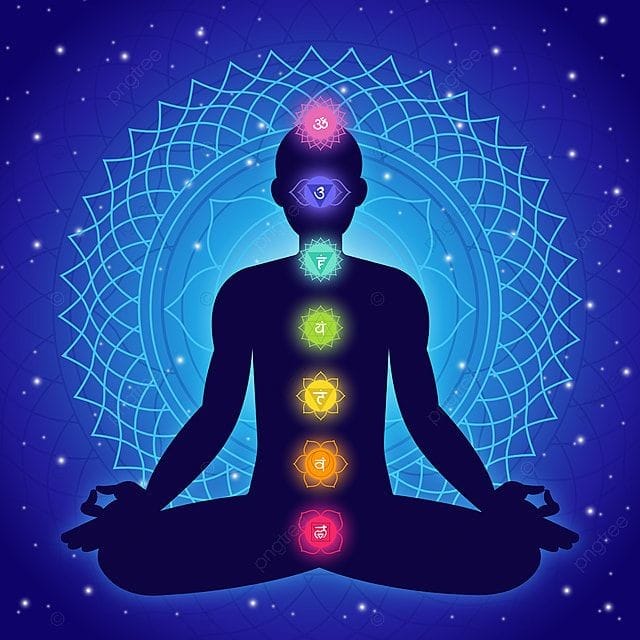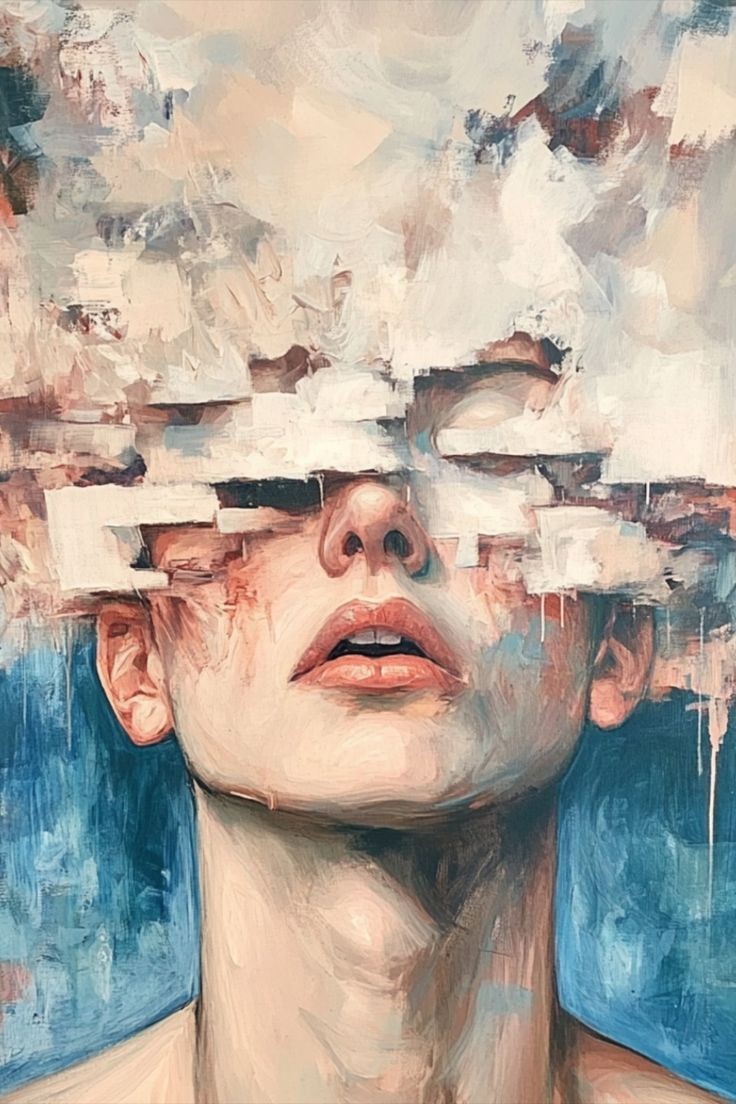🧘♀️ Yoga for Migraine and Headache Relief: Best Poses to Soothe Head Pain Naturally 💆♂️🌿
April 13, 2025 | by paruli6722@gmail.com

Discover the power of Yoga for Migraine and Headache Relief – gentle yoga poses and calming breathing techniques to ease head pain, reduce stress, and promote long-term healing without medication. 🌿💆♀️🧘♂️
🌩️ What is a Migraine or Headache?
A headache is a common discomfort in the head or neck, while a migraine is a more intense, throbbing pain that can include nausea, vomiting, and sensitivity to light or sound. 🌪️
Many people are turning to Yoga for Migraine and Headache Relief as a safe, natural alternative to medicines. 🙏
🧘♂️ Why Choose Yoga for Migraine and Headache Relief?
Yoga for Migraine and Headache Relief is not just about stretching — it’s a holistic practice that:
✅ Relaxes the nervous system 🧠
✅ Improves blood circulation 🩸
✅ Reduces stress and tension 😌
✅ Calms the mind naturally 💆♀️
✅ Balances hormones 🧬
✅ Releases tightness from shoulders, neck, and back 🦴
This makes Yoga for Migraine and Headache Relief a powerful tool to ease and prevent pain.
🌿 Common Triggers That Yoga for Migraine and Headache Relief Can Address:
- Stress or emotional overload 😰
- Irregular sleep patterns 😴
- Poor posture 💻
- Hormonal imbalances 🔁
- Eye strain or screen fatigue 👁️
- Skipped meals or dehydration 💧🍽️
Yoga for Migraine and Headache Relief helps balance your system from within and tackle these root causes.
🧘♀️ Top Yoga Poses for Migraine and Headache Relief
These poses are gentle yet effective in managing pain through Yoga for Migraine and Headache Relief:
🧘♀️ Balasana (Child’s Pose) for Migraine and Headache Relief 🧠
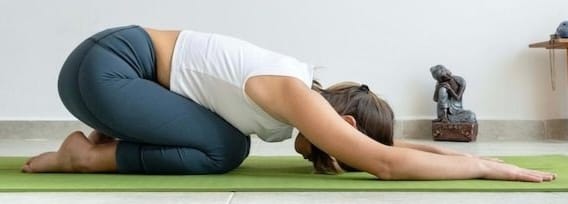
When it comes to managing migraines and headaches naturally, yoga can be an effective and soothing remedy. One of the best poses for relieving tension and stress that contributes to headaches is Balasana or Child’s Pose. In this article, we’ll explore how this simple yet powerful yoga pose can help alleviate migraine symptoms and promote overall relaxation. 🌿
🌟 What is Balasana (Child’s Pose)?
Balasana is a restorative yoga posture that involves kneeling on the floor, gently folding forward, and resting your forehead on the mat. It is a calming pose that stretches the back, hips, and neck while promoting deep relaxation. It’s commonly used in yoga practices for relaxation and to relieve tension in the body.
🌼 How Balasana Helps with Migraine Relief
Migraines and headaches can often be caused or worsened by stress, muscle tension, or poor posture. Here’s how Child’s Pose can help:
- Reduces Neck and Shoulder Tension 🏋️♀️: Balasana helps stretch the neck and shoulders, which can become tight and contribute to headaches. By gently releasing this tension, it allows for better circulation and can ease pain.
- Stimulates the Nervous System 🧘: Child’s Pose encourages deep, diaphragmatic breathing, which can activate the parasympathetic nervous system, promoting relaxation and reducing the intensity of headaches.
- Improves Blood Flow to the Head 💆♂️: The position of the head lower than the heart enhances blood circulation to the brain, which may help relieve headache symptoms and reduce the intensity of migraines.
- Calms the Mind and Body 🧘♂️: The gentle forward bend promotes relaxation, quieting the mind, and reducing the stress that often triggers migraines. The pose allows for a deep connection between the body and breath, which can help calm both mental and physical discomfort.
🌺 Step-by-Step Guide to Practicing Balasana for Migraine Relief
Follow these steps to practice Balasana and experience relief from your migraine or headache:
- Start in a Kneeling Position: Begin by sitting on your knees with your hips on your heels. If this feels uncomfortable, you can place a cushion or blanket between your thighs and calves for extra support.
- Fold Forward Slowly: Inhale deeply and as you exhale, begin to fold forward, reaching your arms out in front of you, or let them rest by your sides with your palms facing upward. Make sure your forehead gently touches the floor or a cushion.
- Relax and Breathe: Stay in this position for at least 5-10 minutes, focusing on deep, slow breaths. Allow your body to relax further with each exhale, releasing any tension.
- Exit Gently: To come out of the pose, slowly lift your head and walk your hands back toward your body. Sit up gently.
🌀 Additional Tips for Migraine Relief with Yoga
- Pair Balasana with Pranayama 🕉️: Combining Child’s Pose with calming breathing techniques like Ujjayi Breath or Nadi Shodhana (Alternate Nostril Breathing) can enhance the effects of the pose and provide deeper relaxation.
- Stay Hydrated 💧: Dehydration is a common migraine trigger, so be sure to drink plenty of water throughout the day.
- Consistency is Key ⏰: For ongoing relief, try practicing Balasana regularly, especially when you feel the onset of tension or stress. Over time, you may notice fewer headaches.
🌿 Conclusion
Incorporating Balasana into your daily yoga routine can provide significant relief from migraines and headaches. Not only does it stretch and release tension in the body, but it also calms the mind and helps manage stress. Try this simple pose the next time you feel a headache coming on, and enjoy its soothing benefits. 🌸
🌪️ Viparita Karani (Legs-Up-The-Wall) for Migraine and Headache Relief 🧠
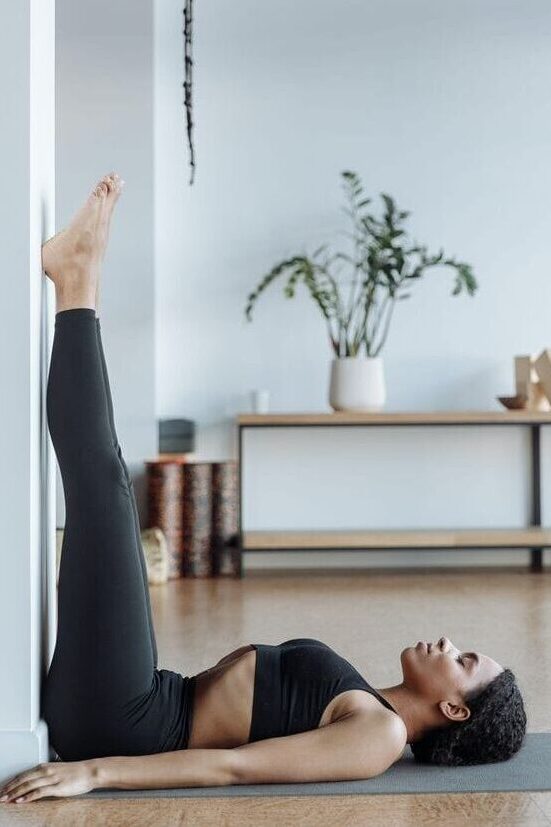
Migraine and tension headaches can be debilitating, but yoga offers natural and effective relief. One powerful pose for alleviating migraine symptoms is Viparita Karani or Legs-Up-The-Wall Pose. In this article, we’ll explore how this gentle inversion pose can help reduce headache pain, promote relaxation, and improve circulation to bring comfort during a migraine attack. 🌸
🌿 What is Viparita Karani (Legs-Up-The-Wall Pose)?
Viparita Karani is a restorative yoga posture that involves lying on your back with your legs extended vertically against a wall. This inversion-like pose allows for deep relaxation, improved blood circulation, and relief from stress and tension. It’s also known for its calming effects on the nervous system.
🌼 How Viparita Karani Helps with Migraine Relief
Here’s how Legs-Up-The-Wall Pose can help ease the discomfort of migraines and headaches:
- Improves Circulation to the Head 💆♀️: When your legs are elevated, blood flow to the brain improves, which can relieve tension and reduce the pain associated with migraines. This increased circulation helps to ease head pressure and relax tight muscles.
- Relieves Muscle Tension 🧘♀️: This pose helps release tension in the legs, lower back, and neck—common areas where tightness can contribute to headaches. It also helps relax the body as a whole, calming the nervous system.
- Calms the Nervous System 🌿: Viparita Karani has a grounding and calming effect on the nervous system. The inversion gently activates the parasympathetic nervous system, helping to reduce stress and anxiety—two major migraine triggers.
- Relieves Mental Fatigue 💭: The soothing nature of the pose can help clear your mind, allowing you to let go of the stress that might be contributing to your headache. It promotes mental clarity and relaxation, reducing the severity of a migraine.
🌸 Step-by-Step Guide to Practicing Viparita Karani for Migraine Relief
Follow these simple steps to practice Legs-Up-The-Wall Pose:
- Find a Wall: Sit next to a wall and lie on your back. Make sure the wall is clear of obstacles and offers enough space for your legs to be fully extended.
- Position Your Legs: Swing your legs up the wall while keeping your back flat on the floor. Your hips should be close to the wall, and your legs should be straight and vertical. If this feels uncomfortable, you can place a cushion or blanket under your hips for extra support.
- Relax and Breathe: Allow your arms to rest by your sides, palms facing up, and close your eyes. Focus on slow, deep breathing to activate the relaxation response. Stay in this position for 10-15 minutes.
- Gently Exit the Pose: When you’re ready to come out of the pose, slowly lower your legs, roll to one side, and rest there for a moment before sitting up.
🌀 Additional Tips for Migraine Relief with Yoga
- Combine Viparita Karani with Pranayama 🕉️: To enhance the benefits of the pose, try pairing it with calming breathing exercises like Anulom Vilom (Alternate Nostril Breathing) or Ujjayi Breath. These can deepen relaxation and further relieve migraine pain.
- Stay Hydrated 💧: Dehydration can trigger migraines, so drink plenty of water before and after practicing the pose.
- Consistency ⏰: Regularly practicing Viparita Karani, especially during migraine-free periods, can help reduce the frequency and intensity of headaches over time.
🌿 Conclusion
Viparita Karani, or Legs-Up-The-Wall Pose, is a simple yet incredibly effective yoga pose for relieving migraine and headache pain. By improving circulation, relaxing the body, and calming the mind, this restorative pose can bring significant relief from the discomfort of a migraine. Try incorporating this pose into your daily yoga routine to experience its calming and soothing benefits. 🌷
🧘♂️ Supta Baddha Konasana (Reclined Butterfly Pose) for Migraine and Headache Relief 🧠
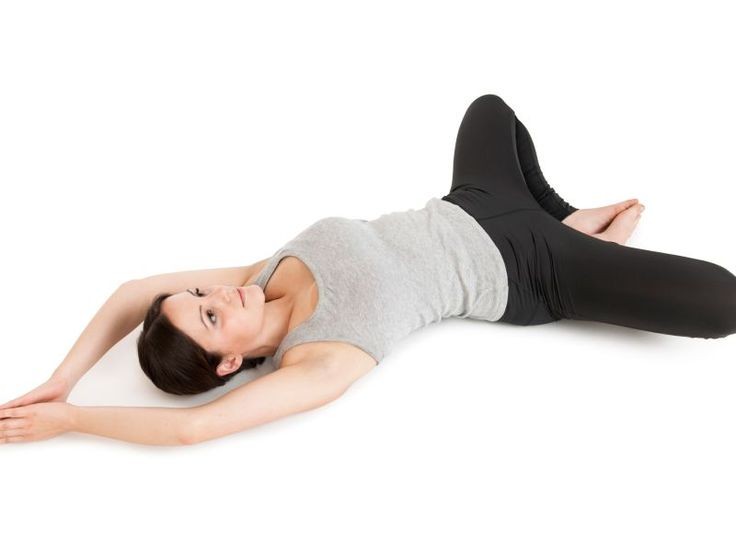
Migraines and headaches can cause intense discomfort, but yoga offers a natural and holistic way to find relief. One of the most effective and restorative poses for migraine and headache relief is Supta Baddha Konasana, also known as Reclined Butterfly Pose. In this article, we’ll explore how this gentle, relaxing pose can help alleviate migraine symptoms, reduce stress, and promote overall wellness. 🌸
🌿 What is Supta Baddha Konasana (Reclined Butterfly Pose)?
Supta Baddha Konasana is a restorative yoga pose that involves lying on your back, bringing the soles of your feet together, and allowing your knees to fall open to the sides. This pose gently opens the hips, stretches the groin, and promotes relaxation, making it a perfect option for those looking to relieve the pain and tension associated with migraines. It also has a calming effect on the mind, which can be incredibly helpful for those suffering from headache-related stress.
🌼 How Supta Baddha Konasana Helps with Migraine Relief
Here’s how Reclined Butterfly Pose can help alleviate migraine symptoms:
- Relieves Tension in the Hips and Lower Back 💆♀️: This pose helps release tension in the lower body, especially in the hips, groin, and lower back—areas where stress and tightness can contribute to headaches. By opening these areas, it helps relieve physical discomfort that might be contributing to the migraine.
- Promotes Deep Relaxation 🧘: Supta Baddha Konasana encourages deep, slow breathing, which activates the parasympathetic nervous system and promotes relaxation. This deep relaxation can help calm the mind and reduce stress, which are common triggers for migraines.
- Stretches the Chest and Shoulders 🏋️♀️: By allowing the chest to open and the shoulders to relax, this pose can help relieve any upper body tension that may contribute to headaches. The gentle stretch in the chest can also improve circulation to the brain.
- Calms the Nervous System 🌿: The stillness and comfort of the pose help calm the nervous system, reducing anxiety and stress, which are often associated with migraine attacks. This relaxation response can help alleviate both the physical and mental aspects of a headache.
🌸 Step-by-Step Guide to Practicing Supta Baddha Konasana for Migraine Relief
Follow these simple steps to practice Reclined Butterfly Pose and experience relief from migraines:
- Lie on Your Back: Begin by sitting on the floor and then gently lie down on your back. Keep your spine aligned and your shoulders relaxed.
- Bring the Soles of Your Feet Together: Bring the soles of your feet together, allowing your knees to fall out to the sides. If needed, place cushions or yoga blocks under your knees for extra support.
- Relax Your Arms: Extend your arms by your sides with your palms facing up or place them on your belly to encourage deep breathing.
- Focus on Your Breath: Close your eyes and focus on slow, deep breaths. Inhale through your nose, allowing your belly to rise, and exhale through your mouth, releasing any tension. Stay in the pose for 5-15 minutes, depending on your comfort level.
- Exit the Pose Gently: When you’re ready to exit the pose, slowly bring your knees back together and roll to one side before sitting up.
🌀 Additional Tips for Migraine Relief with Yoga
- Combine Supta Baddha Konasana with Pranayama 🕉️: To deepen the benefits of the pose, try pairing it with calming pranayama techniques like Nadi Shodhana (Alternate Nostril Breathing) or Ujjayi Breath. These breathing exercises help calm the nervous system and enhance relaxation.
- Create a Calm Environment 🌙: Practicing this pose in a quiet, peaceful environment can further enhance its calming effects. Dim the lights, play soft music, or light a candle to create a soothing atmosphere.
- Stay Hydrated 💧: Dehydration is a common migraine trigger, so ensure that you’re drinking enough water before and after your yoga practice.
🌿 Conclusion
Supta Baddha Konasana, or Reclined Butterfly Pose, is an incredibly effective yoga pose for relieving migraine and headache symptoms. By promoting relaxation, stretching the hips and chest, and calming the nervous system, this pose can bring both physical and mental relief. Incorporating this gentle pose into your yoga routine can help manage migraine attacks, reduce stress, and promote overall well-being. 🌷
💆♀️ Shavasana (Corpse Pose) for Migraine and Headache Relief 🧠
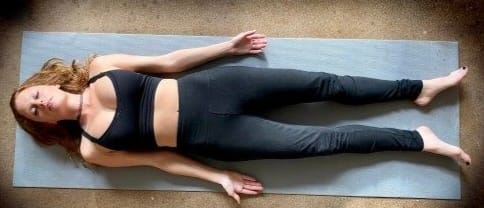
Migraine and headache relief can often feel like an uphill battle, but yoga offers a peaceful solution. One of the most powerful yet simple poses for migraine relief is Shavasana, also known as Corpse Pose. Despite being a resting pose, Shavasana holds deep therapeutic benefits that can help ease the discomfort caused by migraines and tension headaches. In this article, we’ll explore how this restorative pose can bring calm and comfort when you’re struggling with headache pain. 🌿
🌼 What is Shavasana (Corpse Pose)?
Shavasana is a deeply restorative yoga pose typically practiced at the end of a session to help the body absorb the benefits of the practice. It involves lying flat on your back with your arms and legs extended comfortably. The goal of Corpse Pose is total relaxation—letting go of all physical tension and calming the mind. Though it may look simple, this pose is a powerful tool for reducing stress and relieving headaches.
🌿 How Shavasana Helps with Migraine Relief
Here’s how Corpse Pose can help alleviate migraine symptoms:
- Promotes Deep Relaxation 🧘♀️: Shavasana encourages the deepest form of relaxation, allowing the body and mind to enter a state of calm. This is crucial for alleviating the stress and tension that often lead to or worsen migraines.
- Reduces Physical Tension 💆♀️: By lying in a completely relaxed position, Shavasana helps release tension throughout the body, particularly in the neck, shoulders, and back—common areas where tightness can trigger or exacerbate headaches.
- Calms the Nervous System 🌙: This pose activates the parasympathetic nervous system (the “rest and digest” mode), which counters the effects of stress and anxiety. Since stress is a key migraine trigger, Shavasana can play a significant role in reducing headache frequency and intensity.
- Relieves Mental Fatigue 🧠: Shavasana helps calm the mind, allowing it to reset and recharge. By focusing on slow, deep breaths, it can ease the mental fatigue and overwhelm that sometimes accompany migraines.
- Increases Blood Flow to the Brain 💆♂️: Lying on your back with your body fully supported and relaxed improves circulation throughout the body, including the brain. This enhanced blood flow can help alleviate the pressure and discomfort associated with headaches.
🌸 Step-by-Step Guide to Practicing Shavasana for Migraine Relief
Here’s how you can practice Shavasana to help relieve a migraine or tension headache:
- Lie on Your Back: Find a comfortable, quiet space and lie flat on your back. Keep your legs extended, with your feet hip-width apart, and let your arms rest by your sides, palms facing up.
- Focus on Relaxation: Close your eyes and begin to focus on your breathing. Inhale deeply through your nose, filling your belly with air, and exhale slowly through your mouth. Let go of any physical tension with each exhale.
- Release Tension: As you breathe, consciously release tension from your body, starting from your toes and moving upward. Relax your jaw, soften your shoulders, and let your body sink into the floor.
- Stay in the Pose: Stay in Shavasana for at least 10-15 minutes, or as long as feels comfortable. Try to focus only on your breath and the sensation of relaxation spreading through your body.
- Exit the Pose Slowly: To come out of Shavasana, slowly deepen your breath and begin to move your fingers and toes. Gently roll to one side before sitting up, keeping your eyes closed for a few moments to maintain a sense of calm.
🌀 Additional Tips for Migraine Relief with Yoga
- Practice Deep Breathing 🕉️: Pair Shavasana with deep breathing techniques like Pranayama to maximize its calming effects. Nadi Shodhana (Alternate Nostril Breathing) can help balance your energy and enhance relaxation.
- Use Aromatherapy 🌺: Scented oils such as lavender, eucalyptus, or peppermint can enhance relaxation and help reduce headache symptoms when used during your practice.
- Create a Comfortable Environment 🌙: Dim the lights, use soft cushions or blankets, and create a peaceful atmosphere to make your Shavasana practice even more effective for migraine relief.
🌿 Conclusion
Shavasana, or Corpse Pose, is an incredibly effective yet simple tool for relieving migraines and headaches. By promoting deep relaxation, reducing physical and mental tension, and calming the nervous system, Shavasana offers a powerful antidote to the stress and discomfort associated with headaches. Next time you’re struggling with a migraine, try incorporating Corpse Pose into your yoga routine for soothing relief and relaxation. 🌸
🌬️ Breathing Practices in Yoga for Migraine and Headache Relief
Pranayama is a vital part of Yoga for Migraine and Headache Relief, helping the brain receive fresh oxygen and quiet the mind.
🌬️ Anulom Vilom (Alternate Nostril Breathing) for Migraine and Headache Relief 🧠
When it comes to managing migraines and headaches naturally, breathing exercises are some of the most effective tools. One such powerful pranayama (breathing technique) is Anulom Vilom, also known as Alternate Nostril Breathing. This calming and balancing practice can help alleviate migraine symptoms, reduce stress, and improve overall mental clarity. In this article, we’ll explore how Anulom Vilom can help bring relief from migraine pain and tension headaches. 🌿
🌼 What is Anulom Vilom (Alternate Nostril Breathing)?
Anulom Vilom is a simple yet profound breathing technique in yoga that involves alternately closing one nostril at a time while breathing through the other. It’s often referred to as Alternate Nostril Breathing because it helps balance the flow of air through both nostrils. The technique is said to purify the body and mind, calm the nervous system, and improve overall health.
🌿 How Anulom Vilom Helps with Migraine Relief
Here’s how Alternate Nostril Breathing can specifically help reduce migraine and headache symptoms:
- Balances the Nervous System 🧘♀️: Anulom Vilom helps activate the parasympathetic nervous system, which is responsible for the body’s relaxation response. By calming the mind and reducing anxiety, this technique can help prevent or alleviate migraines triggered by stress.
- Improves Oxygen Flow to the Brain 🧠: This breathing exercise encourages deeper, more efficient breathing, increasing the oxygen supply to the brain. This can help reduce the intensity of headaches and migraines, providing mental clarity and easing tension.
- Reduces Stress and Tension 💆♀️: The deep, rhythmic breathing in Anulom Vilom is highly effective for releasing stress and physical tension, particularly in areas like the neck, shoulders, and head, which are often the sites of headache pain.
- Enhances Circulation 💧: The technique improves blood circulation throughout the body, including the brain. Better circulation means improved delivery of oxygen and nutrients to the brain, which can help alleviate the discomfort of headaches and migraines.
- Promotes Mental Calmness 🌙: Anulom Vilom induces a meditative state, allowing the mind to calm and focus. This relaxation not only helps with the physical pain of migraines but also addresses the mental fatigue and stress that often accompany them.
🌸 Step-by-Step Guide to Practicing Anulom Vilom for Migraine Relief
Here’s how to practice Anulom Vilom to relieve a migraine or headache:
- Sit in a Comfortable Position: Sit comfortably with your spine straight, either on the floor or a chair. Keep your shoulders relaxed and your body at ease. You can sit in a cross-legged position (Padmasana) or Sukhasana (easy pose), whichever feels best for you.
- Close Your Eyes: Gently close your eyes and take a few deep breaths to center your focus and calm your mind.
- Position Your Hand: Use your right hand to control the breath. Place your right thumb on your right nostril to close it and use your right ring finger to close your left nostril.
- Start the Breathing Cycle:
- Inhale through your left nostril (while keeping the right nostril closed) for a slow count of 4.
- Hold the breath for a count of 4.
- Exhale through your right nostril (while closing the left nostril) for a count of 6.
- Inhale through your right nostril (while keeping the left nostril closed) for a count of 4.
- Hold the breath for a count of 4.
- Exhale through your left nostril (while closing the right nostril) for a count of 6.
- Repeat: Continue alternating nostrils for 5-10 minutes, focusing on slow, controlled breathing. If your mind wanders, gently bring your focus back to your breath.
🌀 Additional Tips for Migraine Relief with Yoga
- Consistency ⏰: Practicing Anulom Vilom regularly, even when you are not experiencing a migraine, can help prevent future headaches by promoting overall balance and relaxation.
- Pair with Other Relaxation Techniques 🌙: Combine Anulom Vilom with other relaxation techniques like Shavasana (Corpse Pose) or gentle stretching to maximize the calming effects on the body and mind.
- Stay Hydrated 💧: Drinking plenty of water throughout the day can help reduce the intensity and frequency of migraines, so always stay hydrated before and after practicing Anulom Vilom.
- Create a Calm Environment 🌸: For best results, practice in a quiet, serene space free from distractions. Dim the lights, sit comfortably, and focus entirely on your breathing.
🌿 Conclusion
Anulom Vilom (Alternate Nostril Breathing) is an effective and simple yoga technique for relieving migraines and headaches. By calming the nervous system, improving oxygen flow to the brain, and reducing stress, this powerful pranayama practice can help ease both the physical and mental aspects of headache pain. Try incorporating Anulom Vilom into your daily routine to experience its long-term benefits for migraine relief and overall wellness. 🌷
🐝 Bhramari Pranayama (Bee Breath) for Migraine and Headache Relief 🧠
Migraine and headache relief often requires a holistic approach, and one of the most effective breathing techniques for calming both the mind and body is Bhramari Pranayama, also known as Bee Breath. This powerful pranayama technique involves creating a humming sound, similar to the buzzing of a bee, while breathing deeply. In this article, we’ll explore how Bhramari Pranayama can provide relief from migraine pain, reduce stress, and enhance your overall well-being. 🌸
🌿 What is Bhramari Pranayama (Bee Breath)?
Bhramari Pranayama is a breathing technique that involves inhaling deeply through the nose and exhaling while making a buzzing sound, like a bee. The vibration from the sound helps soothe the nervous system and calm the mind, making it highly beneficial for those suffering from migraines, tension headaches, and stress. The word “Bhramari” comes from the Sanskrit word for “bee,” symbolizing the buzzing sound produced during the exhale.
🌼 How Bhramari Pranayama Helps with Migraine Relief
Here’s how Bee Breath can help alleviate migraine and headache symptoms:
- Reduces Stress and Anxiety 🧘♀️: Bhramari Pranayama helps activate the parasympathetic nervous system, which is responsible for the body’s relaxation response. By calming the mind and reducing anxiety, this technique can help prevent or alleviate stress-induced headaches and migraines.
- Soothes the Nervous System 🌙: The humming sound produced during the exhale of Bhramari creates vibrations that have a soothing effect on the nervous system. This calming effect helps reduce the intensity and frequency of migraines, offering relief from both physical pain and mental tension.
- Relieves Tension in the Head and Neck 💆♀️: By focusing on deep, mindful breathing, Bhramari Pranayama helps release tension from the head, neck, and shoulders—common areas where tightness often leads to headaches. The vibration also stimulates the sinuses, which can help reduce sinus headaches and improve overall clarity.
- Improves Oxygen Flow to the Brain 🧠: The deep breathing in Bhramari Pranayama increases the oxygen supply to the brain, promoting circulation and helping to alleviate the discomfort associated with migraines.
- Enhances Mental Clarity and Focus 🔮: Bhramari helps clear the mind, improve concentration, and reduce mental fatigue—three factors that contribute to migraine intensity. This increased mental clarity can help relieve migraine-related cognitive fog.
🌸 Step-by-Step Guide to Practicing Bhramari Pranayama for Migraine Relief
Follow these simple steps to practice Bhramari Pranayama and find relief from a migraine or tension headache:
- Sit Comfortably: Find a quiet space and sit in a comfortable position, such as Sukhasana (easy pose) or on a chair with your back straight. Rest your hands on your knees or thighs, and close your eyes.
- Close Your Ears: Use your thumbs to gently close your ears by placing them over the cartilage on the outer ear. You can also place your index fingers on your eyes, and your middle fingers on the sides of your nose, while the rest of your fingers rest on your face for support.
- Inhale Deeply: Take a deep breath in through your nose, filling your lungs with air. Make sure your inhales are slow and controlled, allowing your diaphragm to expand fully.
- Make the Buzzing Sound: As you exhale, make a low humming sound, like the buzzing of a bee. The sound should be smooth and steady, and you should feel the vibrations in your head, face, and neck.
- Repeat: Continue this process for 5-10 rounds. Inhale deeply through your nose and exhale with the humming sound. Focus on the vibrations and allow your body to relax with each exhale.
- Finish Gently: After completing the rounds, sit quietly for a few moments, allowing the calming effects of the practice to take root in your body. Slowly open your eyes and return to your normal breathing.
🌀 Additional Tips for Migraine Relief with Yoga
- Practice Regularly ⏰: Practicing Bhramari Pranayama regularly can help prevent migraines by promoting overall mental and physical relaxation. Make it a part of your daily routine to experience its long-term benefits.
- Combine with Other Yoga Practices 🌿: Pair Bhramari Pranayama with poses like Shavasana (Corpse Pose) or Viparita Karani (Legs-Up-The-Wall) for enhanced relaxation and migraine relief.
- Stay Hydrated 💧: Dehydration is a common migraine trigger, so be sure to drink plenty of water before and after your practice.
- Create a Calm Environment 🌙: For best results, practice in a peaceful, quiet environment free of distractions. You can dim the lights, play soothing music, or use essential oils like lavender to further enhance your practice.
🌿 Conclusion
Bhramari Pranayama (Bee Breath) is a simple yet incredibly effective technique for relieving migraines and tension headaches. By reducing stress, soothing the nervous system, and improving circulation to the brain, this breathing exercise can provide much-needed relief from the discomfort of migraines. Whether you practice it regularly as a preventative measure or use it during an acute migraine episode, Bee Breath can help calm both your mind and body. 🌷
📉 Symptoms of Migraine You Shouldn’t Ignore
Before starting Yoga for Migraine and Headache Relief, it’s important to recognize common signs:
- Throbbing or pulsing pain (often one-sided)
- Nausea or vomiting 🤢
- Sensitivity to light or sound 💡🔊
- Aura or visual disturbances 👁️
- Neck stiffness or pain 😖
Knowing these helps track your triggers and results better with yoga practice.
🧠 How Stress Triggers Migraine – And How Yoga Helps
Stress is one of the most common causes of migraine. When we’re anxious, our muscles tense, breathing becomes shallow, and blood pressure spikes — all of which can lead to a headache.
Practicing Yoga for Migraine and Headache Relief calms your nervous system and lowers cortisol, the stress hormone, bringing quick and lasting relief. 😌
🛏️ Bedtime Yoga Flow for Migraine Prevention
Create a simple night routine using Yoga for Migraine and Headache Relief:
- Supta Baddha Konasana (5 mins)
- Legs-Up-The-Wall (3–5 mins)
- Balasana (2 mins)
- Shavasana (5–10 mins) with slow breathing
🕯️ Add calming music or essential oils (like lavender) to enhance relaxation.
🫀 Can Yoga Cure Migraine Permanently?
While yoga may not be a permanent cure, regular practice of Yoga for Migraine and Headache Relief significantly reduces:
- Frequency of migraine attacks
- Intensity of headaches
- Dependency on medication
It strengthens your body, calms your mind, and promotes long-term healing 🌱
🧘♀️ Yoga vs. Medicine: Which Is Better for Migraine?
Yoga for Migraine and Headache Relief is:
✅ Safe
✅ Side-effect-free
✅ Long-lasting
✅ Holistic
Whereas medication often provides only short-term relief and can have side effects. For long-term results, yoga
🕘 Best Time to Practice Yoga for Migraine and Headache Relief
🕗 Early morning or evening
🌃 Before bedtime for stress release
🧘♀️ During mild pain to prevent it from worsening
🚫 Avoid during severe migraine attacks — rest instead
⚠️ Lifestyle Tips Along with Yoga for Migraine and Headache Relief
✅ Stay hydrated 💧
✅ Maintain good sleep habits 😴
✅ Take screen breaks regularly 📵
✅ Keep a calm daily routine 🧘
✅ Combine with healthy diet and mindfulness
With daily Yoga for Migraine and Headache Relief, these small changes make a big difference.
🔚 Final Thoughts: Heal Naturally with Yoga for Migraine and Headache Relief 🌿
Instead of reaching for pills every time, embrace Yoga for Migraine and Headache Relief — a natural, gentle, and effective way to manage pain. 🌈✨
With consistency and care, Yoga for Migraine and Headache Relief can become your go-to tool for peace, balance, and pain-free living. 💆♂️🧘♀️
📝 Disclaimer
Always consult a medical professional before starting yoga, especially if you have chronic migraines or health conditions.
RELATED POSTS
View all
